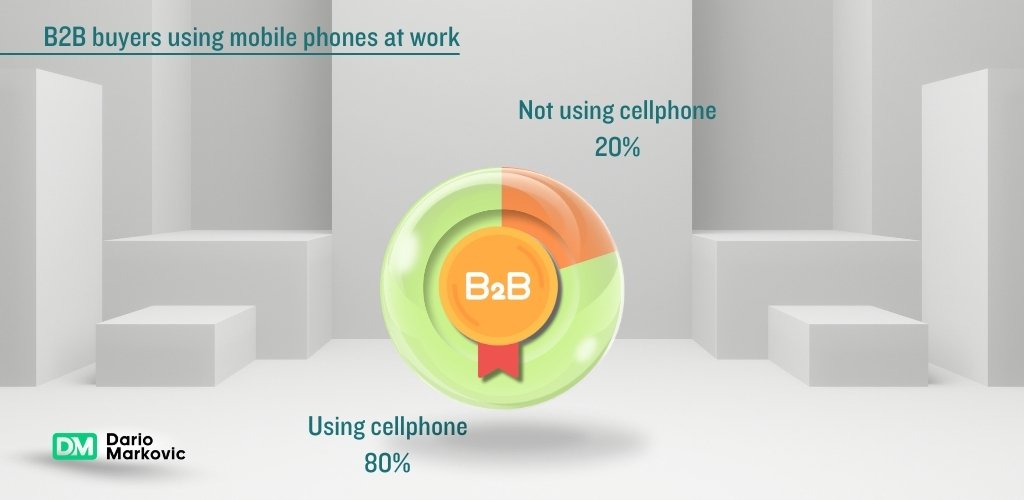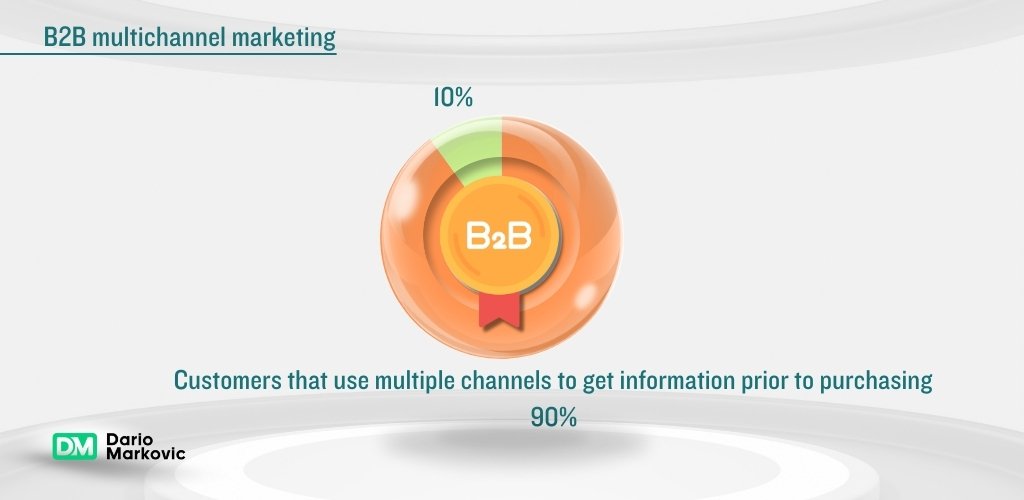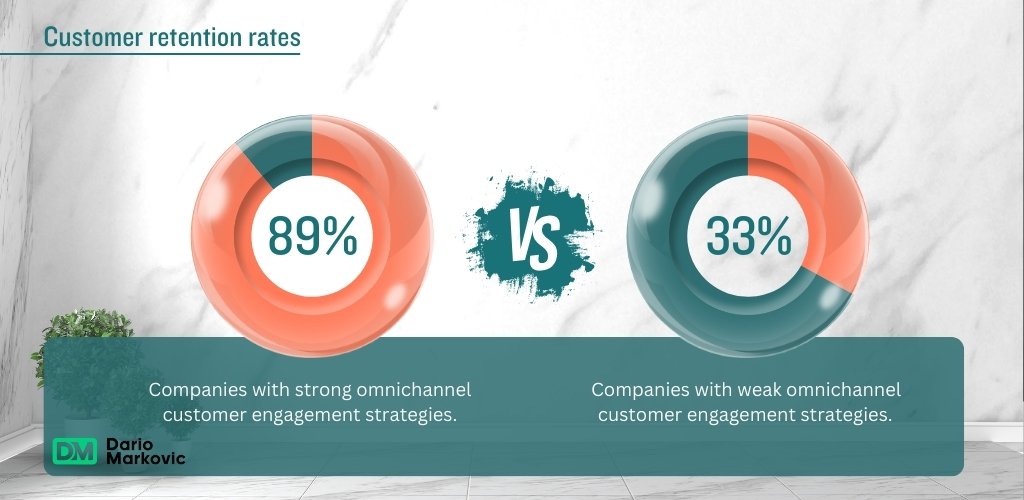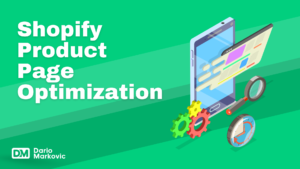As we move deeper into 2024, B2B trends continue to shift rapidly. With constant advancements in technology, evolving buyer expectations, and changes in global markets, companies must stay ahead of emerging trends to remain competitive. Here are eight key B2B trends shaping the future of business in 2024 and beyond.
I’m talking about mobile optimization, personalization, and omnichannel sales! They’re the key to unlocking a new level of success in your online B2B consumer-grade sales. Let’s dive into some of the hottest digital commerce trends you can’t overlook.
Top B2B Ecommerce Trends to Watch Out For in 2024
The B2B ecommerce landscape is evolving at a breakneck pace. In 2020, the global B2B eCommerce market was worth \$6.64 trillion.
And this train isn’t hitting the brakes anytime soon. Experts predict in an in-depth report on b2b ecommerce that the market will grow at a compound annual growth rate (CAGR) of 18.7% from 2021 to 2028. That’s huge!
As someone knee-deep in B2B ecommerce for years, I’ve seen firsthand how rapidly things can change. And let me tell you, 2024 is shaping to be a game-changer. Without further ado, let’s dive in to the trends!
1. Mobile Optimization
Gone are the days when B2B buyers were chained to their desks. Today, they expect to research and make purchases on the go, so mobile optimization is non-negotiable. Your ecommerce site must be fully responsive and easy to navigate on any device. If your site isn’t mobile-friendly, you’re leaving money on the table.
B2B buyers are craving a more personalized customer experience. They want to feel like you understand their unique needs and challenges. Imagine this – with a little help from AI tools and insights on your buyers, recommending just the right products or services becomes second nature.

2. Omnichannel Sales
Omnichannel is the name of the game in B2B ecommerce. Your buyers expect a seamless experience across every touchpoint, from your website to social media to offline channels.
It’s not enough to have a presence on multiple channels. You must ensure they work harmoniously to guide buyers through purchasing.
Automation is a total game-changer for B2B ecommerce. It can help you streamline everything from order processing to inventory management to personalized marketing campaigns.
Not only does automation save you time and money, but it also frees up your team to focus on more strategic initiatives. Plus, it can seriously boost the customer experience.

3. Video Content
Video is taking the B2B ecommerce world by storm. Product demos, tutorials, customer testimonials – you name it, video can do it.
Buyers seem to connect more when they see things in action through video. It’s engaging and informative and can help build trust in a way that text and images alone can’t.
4. Headless Commerce Architecture
Headless commerce is the future of B2B ecommerce. Splitting the front-end look from the back-end mechanics gives you unmatched freedom to mix, match, and customize until your heart’s content.
This architecture allows you to adapt quickly to changing market demands and deliver exceptional customer experiences. It’s a no-brainer for businesses that want to stay ahead of the curve.
5. Artificial Intelligence (AI)
AI is revolutionizing B2B sales and marketing by automating mundane tasks, providing data-driven insights, and enhancing customer experiences. From chatbots to predictive analytics, AI will continue to play a vital role in streamlining B2B operations and driving growth.
6. Account-Based Marketing (ABM)
Account-based marketing is no longer a niche strategy; it’s becoming a mainstream approach for B2B businesses. By focusing on targeted accounts and personalized messaging, ABM helps businesses build stronger relationships and drive revenue growth. Expect to see more businesses investing in ABM tools and strategies in 2024.

7. Customer Experience (CX) Takes Priority
CX is no longer a nice-to-have; it’s a must-have for B2B businesses. As customers become increasingly demanding, businesses must prioritize personalized, omnichannel experiences to stay ahead. Expect to see more investments in CX technologies, such as CRM systems and customer feedback tools.
8. Virtual and Augmented Reality (VR/AR)
VR/AR technologies are transforming the B2B landscape by enabling immersive, interactive experiences. From product demos to training sessions, VR/AR will become increasingly important for businesses looking to differentiate themselves and engage their customers.
9. Sustainability and Social Responsibility
As consumers become more environmentally conscious and socially aware, B2B businesses must prioritize sustainability and social responsibility. Expect to see more businesses incorporating eco-friendly practices, diversity and inclusion initiatives, and philanthropic efforts into their operations and marketing strategies.
Harnessing Emerging B2B E-commerce Trends for 2024
The B2B e-commerce space will undoubtedly continue changing. Now, businesses need to catch up with new trends. Several developments in 2024 will transform the way companies work and relate to their clients. Following is how you can utilize these emerging trends to help keep you competitive and on the growth track.
Personalized Customer Experiences
Advanced Integration of AI and Machine Learning
Enhanced Omnichannel Strategies
An omnichannel approach can ensure a frictionless customer experience across different platforms, from online stores to mobile applications and social media. In 2024, this is where more investment by B2B companies in the integration of sales channels will pay off by offering customers a seamless ability to move from one to the other. It is a holistic approach aimed at improving customer convenience, with the delivery of a consistent brand experience.
Adoption of Blockchain Technology
Investing in Robust Ecommerce Technology
To stay competitive in the fast-paced world of B2B ecommerce, you need to invest in the right technology. This means choosing scalable, flexible, and built to last.
I can’t stress enough how vital headless commerce is. You can check our B2B ecommerce examples blog for more. By decoupling the front end from the back end, you can achieve a level of flexibility and customization that isn’t possible with traditional ecommerce platforms.
Headless commerce makes integrating with other systems and adapting to changing market demands easier. It’s a wise investment for any business that wants to future-proof its e-commerce stack.
AI-Powered Tools
AI is transforming every aspect of B2B ecommerce, from personalization to customer support to fraud detection.
By investing in AI-powered tools, you can automate routine tasks, gain deeper insights into customer behavior, and deliver more targeted experiences.
The key is to choose AI solutions that integrate seamlessly with your existing systems and processes. You don’t want to create more silos – you want to break them down.
Data is the lifeblood of B2B ecommerce. With the right advanced analytics, getting to know your customers better, understanding market dynamics, and seeing your business with clearer eyes becomes possible.
Picture this – each insight acts like a tool, helping you decide wisely and smoothing out your strategy while pumping up the performance of all things ecommerce along the way.
It’s not just about collecting data – it’s about using it to drive real results.
Cloud-Based Solutions
The wave of cloud-based ecommerce platforms is catching on fast among B2B companies looking for an edge. And for good reason – they offer unparalleled scalability, flexibility, and cost-effectiveness.
When you migrate your ecommerce activities to the cloud, it’s like giving yourself a break from hefty IT bills and tangled processes so that delighting customers becomes job number one.
Streamlining Sales Cycles with Digital Tools
The B2B sales landscape is evolving at a breakneck pace. Buyers expect a seamless, digital-first experience that rivals the ease of B2C transactions.
To keep up, savvy B2B sellers invest in robust tools that streamline the sales process and drive efficiency. According to a recent survey, e-commerce platforms and applications are among the top three technology investment priorities for B2B sellers in 2023.
For B2B sales teams, CPQ software has changed the game. It automates the complex process of configuring products, generating quotes, and managing pricing.
Imagine saying goodbye to those pesky errors that slow everything down. With CPQ in play, closing deals becomes quicker, freeing your team to focus on what truly matters – forging stronger customer bonds. This way, you can trust that each quote hits the mark and turns a tidy sum.
Digital Product Catalogs
Gone are the days of lugging around physical catalogs. Today’s B2B buyers expect to find detailed product information at their fingertips, so investing in a comprehensive digital catalog is essential.
You’ll want to throw in sharp pictures, the nitty-gritty of tech details, and what people say about it. A well-designed catalog enhances the customer experience and equips sales reps with the information they need to have productive conversations and drive deals forward.
Real-Time Inventory Visibility
In the fast-paced world of B2B sales, real-time inventory visibility is crucial.
Buyers must know that their desired products are available and ready to ship. By integrating inventory management systems with the best wholesale ecommerce platforms, B2B sellers can provide up-to-the-minute stock information.
This transparency builds trust and prevents frustrating backorders and delays. Real-time inventory and supply chain management data also helps sales teams make informed recommendations and strategically upsell.
Harnessing the Power of Customer Data
Data is the lifeblood of modern B2B sales. By understanding customer data, those selling can peel back the layers on shopper habits and tastes like never before.
However, with data coming in from multiple touchpoints, it can be challenging to get a complete picture. That’s where customer data platforms come in.
Customer Data Platforms (CDPs)
CDPs are designed to unify customer data from across the organization. They create comprehensive profiles that include demographics, purchase history, and engagement data.
With this 360-degree view, B2B sellers can personalize outreach, tailor product recommendations, and anticipate customer needs.
According to McKinsey, this data-driven approach can boost revenue by 5-10%. Predictive analytics takes customer data to the next level.
By applying machine learning algorithms, B2B sellers can identify patterns and forecast future behavior. This powerful capability allows sales teams to prioritize leads, optimize pricing, and proactively address churn risks. In essence, predictive analytics enables sellers to future-proof their revenue pipeline.
Hyper-Personalization
B2B buyers expect a tailored experience that speaks directly to their unique needs and challenges. Hyper-personalization makes this possible at scale.
Imagine getting product tips or exclusive deals crafted just for your business. Thanks to AI analyzing fresh-off-the-press data in real-time – this is not a daydream anymore; it’s what modern B2B commerce looks like today.
When you connect with what folks want, you see a spark of interest and a lasting commitment.
Adapting to Evolving B2B Buyer Expectations
The B2B landscape is experiencing a seismic shift. As millennials step into decision-making roles, they’re bringing their B2C expectations with them.
To stay competitive, B2B sellers must adapt to these evolving buyer demands. That means embracing digital channels, prioritizing convenience, and delivering exceptional customer experiences.
Mobile-First Experiences
B2B buyers are increasingly using mobile devices to research products and make purchases. Mobile commerce will account for 17% of all B2B sales in 2023. To capitalize on this trend, B2B sellers must prioritize mobile-first experiences.
That means responsive website design, streamlined navigation, and fast load times. It also means enabling buyers to complete tasks on the go, from requesting quotes to tracking orders. By making mobile interactions frictionless, B2B sellers can drive engagement and conversions. In today’s always-on world, B2B buyers expect round-the-clock support.
Customer questions need quick answers, regardless of the time or day. B2B sellers invest in self-service tools like chatbots and knowledge bases to meet this demand. These resources allow buyers to find information on their terms.
Yet, gadgets and gizmos can’t fully replace real human connection. B2B sellers must also provide easy access to live support via phone, email, or real-time chat.
Flexible Payment Options
B2B transactions often involve large sums and complex payment terms. To streamline the business processes, sellers offer various flexible options.
We cover all bases, from jotting down purchase orders and crafting invoices to clicking through with e-checks or tapping into virtual card payments.
By tuning into what buyers want, B2B sellers can smooth out the rough spots and speed up their sales process.
Transparent Order Tracking
Once an order is placed, B2B buyers want to stay informed every step of the way. They expect real-time updates on processing, shipping, and delivery. To provide this level of transparency, B2B sellers are integrating order tracking into their e-commerce platforms.
This allows buyers to self-serve and reduces the burden on customer support teams. But transparency goes beyond just tracking.
B2B sellers must also communicate proactively about any delays or issues and provide clear timelines for resolution. By keeping buyers informed, sellers can build trust and foster long-term partnerships.
Wrapping Up: Dario’s Conclusion
Phew, that was a whirlwind tour of the top B2B ecommerce trends! From mobile-first experiences and 24/7 customer support to flexible payment options and transparent order tracking, it’s clear that the B2B ecommerce landscape is evolving at a breakneck pace.
The key takeaway? Embracing these trends isn’t just a nice-to-have; it’s a must-have for any B2B business looking to thrive in the digital age and be on the supply chain.
By staying on top of B2B ecommerce development and adapting your strategies accordingly, you’ll be well-positioned to meet the ever-changing needs and expectations of your B2B buyers.
So, what are you waiting for? Start implementing these B2B ecommerce trends today and watch your online sales soar!
FAQ
The latest trends in B2B ecommerce focus on personalized customer experiences, mobile optimization, and advanced analytics. Businesses are leveraging AI to provide tailored recommendations and services to their clients. Additionally, optimizing for mobile has become necessary as more decision-makers use smartphones for business purchases. Advanced analytics tools are now being used to track sales and predict future buying patterns and preferences.
Artificial Intelligence (AI) is revolutionizing how companies interact with their customers by enabling hyper-personalization at scale. From chatbots providing instant customer service around the clock to algorithms predicting what products buyers need before searching for them—AI enhances every step of the buyer’s journey.
In today’s fast-paced world, having a mobile-optimized platform is no longer optional; it’s essential. With increasing executives making purchase decisions via smartphones or tablets, ensuring your website offers an excellent mobile experience can significantly impact conversion rates.
Absolutely! While traditionally seen as a consumer-focused tool, social media platforms like LinkedIn have proven extremely effective for building brand awareness among professionals and facilitating valuable industry connections within the business community.
- Educating Customers: Informative content helps educate potential clients about products or services.
- Solving Problems: By addressing common issues faced by your target audience.
Fostering Relationships: Good content creates trust between you & your clientele. - Maintaining Visibility: Diverse content strategies ensure constant engagement across multiple channels.



